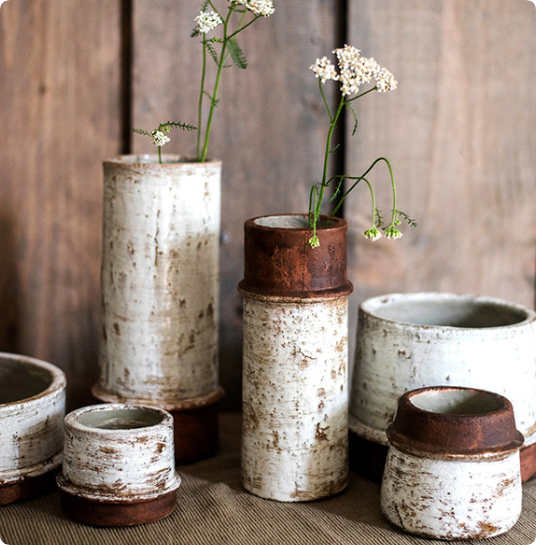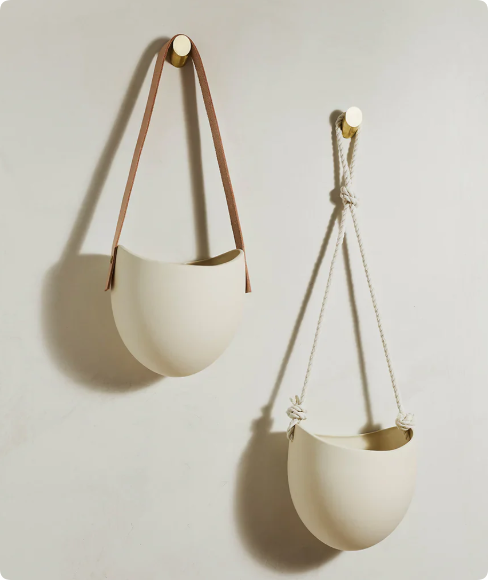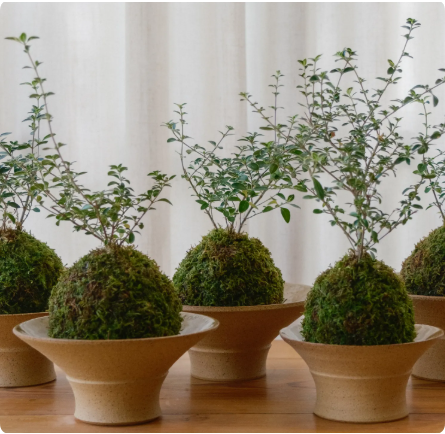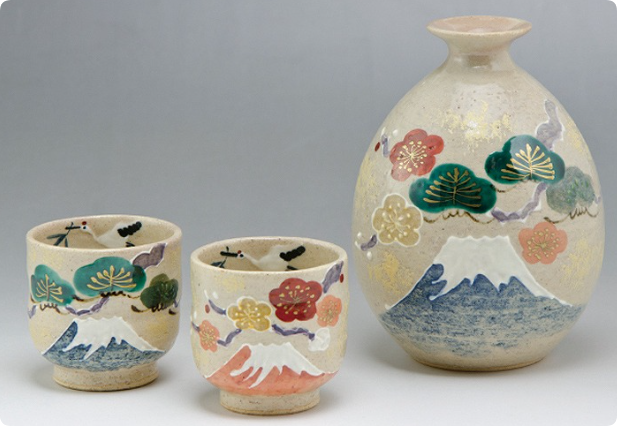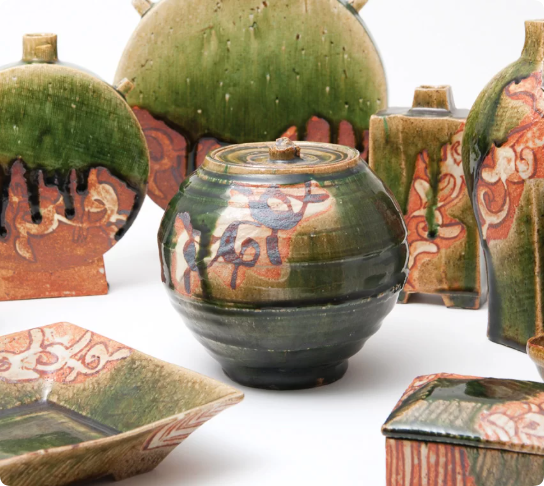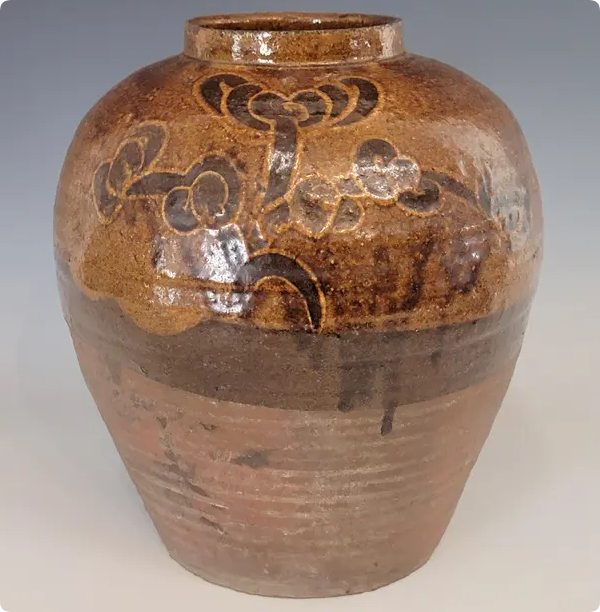Urban gardening is becoming an increasingly popular trend across the globe, particularly in densely populated cities like those in Japan. As urban spaces grow tighter and the natural world becomes more disconnected from our daily lives, the practice of growing plants in small spaces has become a way to reconnect with nature. Among the many options available for urban gardening, ceramic flower pots have emerged as one of the most popular choices. This article will explore the role ceramic flower pots play in urban gardening in Japan, examining their benefits, design trends, and why they are the preferred choice for many Japanese gardeners.
The Rise of Urban Gardening in Japan
Urban gardening has witnessed a significant rise in Japan due to several factors, including limited space, environmental awareness, and a cultural appreciation for nature. In densely populated cities such as Tokyo, Osaka, and Kyoto, residents often lack access to large outdoor spaces. This has led to the development of innovative gardening solutions that allow people to grow plants in confined spaces like balconies, rooftops, and even windowsills.
Japanese urban gardening enthusiasts have embraced various types of plants, from flowers to herbs and vegetables, cultivating these plants in environments where space is at a premium. Among these urban gardeners, ceramic flower pots have become an essential component of their gardening toolkit. Let’s dive deeper into the role of ceramic flower pots in urban gardening in Japan.
Why Ceramic Flower Pots Are a Popular Choice in Japan
1. Aesthetic Appeal
Ceramic flower pots are renowned for their visual appeal. Japanese culture places great importance on aesthetics, and gardening is no exception. The natural textures and earthy tones of ceramic pots fit perfectly with Japanese design principles, such as wabi-sabi, which celebrates imperfection and transience. Whether it is a minimalist design or one with intricate patterns, ceramic pots can complement the natural beauty of plants while adding elegance to any urban garden.
2. Durability and Longevity
Japanese urban gardeners prefer ceramic pots for their durability. Unlike plastic or metal containers, ceramic pots are made to withstand various weather conditions, making them ideal for both indoor and outdoor use. Whether exposed to the heat of summer or the cold of winter, ceramic flower pots can last for many years, offering excellent value for money. Their heavy-duty construction also ensures that the plants stay secure and protected from strong winds or knocks, which is especially important for rooftop gardens.
3. Breathability and Moisture Control
One of the key advantages of ceramic pots over plastic containers is their ability to allow air and moisture to flow through the material. This natural breathability is crucial for plant health, as it prevents root rot and encourages better drainage. In Japan, where humidity can fluctuate drastically between seasons, the moisture control provided by ceramic pots helps create the optimal growing conditions for plants. This makes ceramic pots an ideal choice for plants that need careful watering, such as succulents or delicate flowers.
4. Eco-Friendly Choice
Japan has a long-standing tradition of valuing environmental sustainability, and ceramic flower pots align with this philosophy. Unlike plastic pots, which contribute to pollution and waste, ceramic pots are made from natural materials like clay. Furthermore, ceramic pots can be recycled or repurposed, further reducing their environmental footprint. For Japanese consumers who are increasingly concerned about their ecological impact, ceramic flower pots offer a more sustainable and responsible option.
Design Trends for Ceramic Flower Pots in Japan
1. Minimalist and Clean Designs
Minimalism has become a key design trend in Japan, reflecting the country’s broader cultural aesthetic. Ceramic flower pots in minimalist styles are highly favored, often featuring simple shapes, neutral colors, and understated finishes. These pots are designed to let the plants themselves take center stage, allowing the greenery to become the primary focus.
2. Handcrafted and Artisan Pieces
There is a growing demand for handcrafted ceramic flower pots in Japan. These pots often feature unique textures, glazes, and patterns that reflect the skills of individual artisans. Handcrafted pots are seen as works of art, and they carry a sense of authenticity and craftsmanship that appeals to urban gardeners seeking a personal connection to their gardening tools.
3. Modern Japanese Aesthetic
In recent years, many urban gardeners have embraced a more contemporary look for their ceramic pots, which blends traditional Japanese aesthetics with modern design sensibilities. Sleek, cylindrical pots with smooth finishes and monochromatic colors are popular in urban spaces where style and functionality need to coexist. These modern pots are often found in gardens with a mix of traditional and contemporary elements.
Ceramic Flower Pots in Urban Gardening: A Comparison
While ceramic flower pots offer many advantages, they are not the only option available to urban gardeners. Below is a table that compares ceramic pots with other popular types of planters used in urban gardening in Japan.
| Feature | Ceramic Flower Pots | Plastic Pots | Metal Pots |
|---|---|---|---|
| Aesthetic Appeal | Elegant, natural, fits with Japanese design principles | Often less visually appealing, limited design options | Modern, sleek, can be customized |
| Durability | Highly durable, can withstand weather conditions | Less durable, can crack in cold weather | Prone to rust, not as durable outdoors |
| Breathability | Allows air and moisture flow, reducing root rot | Poor air circulation, leads to root rot | Good ventilation, but can heat up in the sun |
| Weight | Heavy, stable, ideal for windy areas | Lightweight, easy to move | Heavy, but can be unstable in windy areas |
| Environmental Impact | Made from natural materials, eco-friendly | Contributes to plastic waste | Can rust over time, less eco-friendly than ceramic |
| Cost | Higher cost, premium quality | Low-cost, affordable | Mid-range, depending on material |
| Maintenance | Easy to clean, long-lasting | Needs replacing more frequently | Requires maintenance to prevent rust |
The Future of Ceramic Flower Pots in Japan’s Urban Gardening
Looking forward, it’s clear that ceramic flower pots will continue to play a central role in urban gardening in Japan. As more people embrace the idea of growing plants in small spaces, the demand for high-quality, durable, and aesthetically pleasing pots will only increase. In addition, as urban gardening becomes more integrated into the fabric of Japanese city life, the role of ceramic pots will likely expand beyond just flower gardening to include vegetable and herb cultivation as well.
Furthermore, the growing trend of sustainability in Japan will continue to encourage the use of eco-friendly materials like ceramic. As Japanese consumers become more conscientious about their environmental impact, products like ceramic flower pots that offer both beauty and sustainability will become even more popular.
5 well-known Japanese ceramic flower pot brands that have a strong reputation in the Japanese gardening market:
- Arita-yaki
- Arita-yaki is one of the most famous ceramic brands in Japan, originating from the Arita region in Saga Prefecture. It is known for its exquisite designs, superb craftsmanship, and traditional blue-and-white patterns. While Arita-yaki is primarily known for tableware, its ceramic flower pots are also highly regarded for their elegant appearance and high quality.
- Shigaraki-yaki
- Shigaraki-yaki is a part of Japan’s traditional ceramics, originating from the Shigaraki region in Shiga Prefecture. Shigaraki pottery often features a natural, rustic texture, with warm earth tones, making it popular among gardening enthusiasts who favor a natural style.
- Seto-yaki
- Seto-yaki is another long-established ceramic brand in Japan, originating from the Seto region in Aichi Prefecture. Known for its diverse designs and high-quality ceramics, Seto-yaki’s ceramic flower pots often blend modern and traditional designs, suitable for various gardening needs.
- Kyo-yaki
- Kyo-yaki is traditional ceramics from the Kyoto region, renowned for its refined craftsmanship and elegant style. Kyo-yaki ceramic flower pots typically feature intricate decorative patterns and exquisite glazing, making them ideal for gardening enthusiasts seeking beauty and artistic expression.
- Mino-yaki
- Mino-yaki comes from Gifu Prefecture and is one of Japan’s most famous ceramics. Mino-yaki’s ceramic flower pots are widely appreciated for their diverse designs, rich textures, and high-quality craftsmanship, making them suitable for both modern and traditional garden styles.
These brands not only dominate the domestic Japanese market but also have a significant presence in the international market, thanks to their unique designs and top-quality craftsmanship.
Conclusion
Ceramic flower pots have established themselves as a fundamental component of urban gardening in Japan. Their aesthetic appeal, durability, breathability, and eco-friendly nature make them the perfect choice for urban gardeners looking to grow plants in confined spaces. As Japan’s urban gardening scene continues to evolve, ceramic flower pots will remain a key tool for creating beautiful and sustainable gardens in the heart of the city.
At Hale, we specialize in crafting high-quality ceramic flower pots designed for urban gardeners. Whether you’re looking for a minimalist design, handcrafted elegance, or modern aesthetics, our ceramic flower pots are perfect for enhancing your urban garden. Contact us today to learn more about our custom options and how we can help bring your garden to life.

